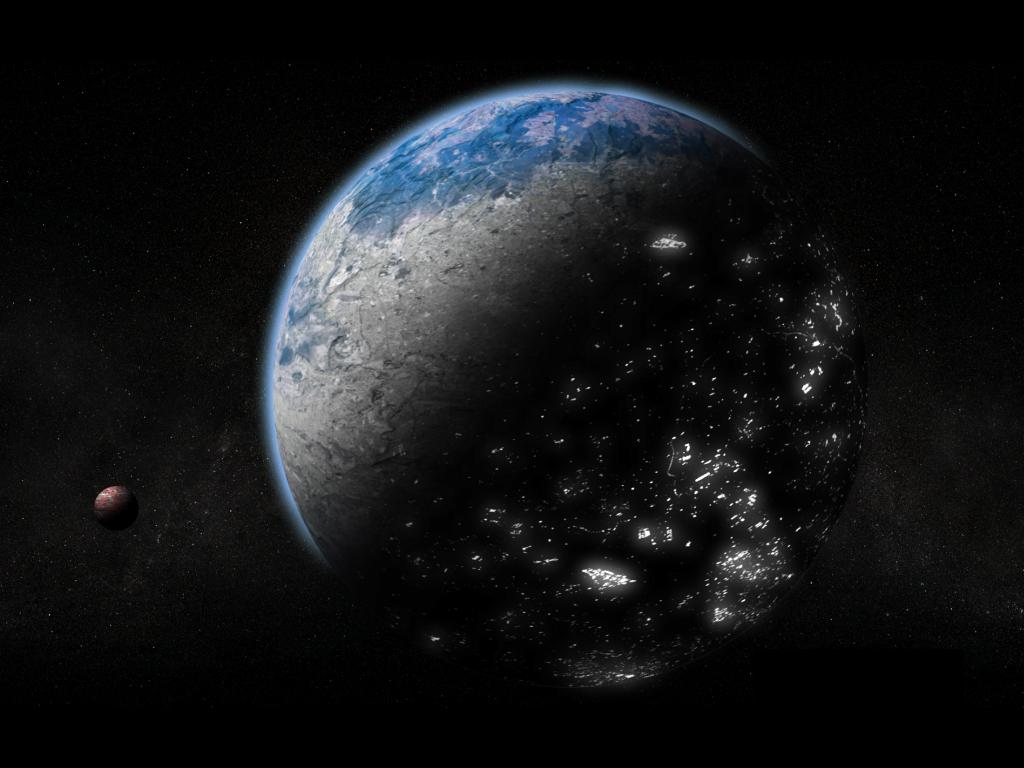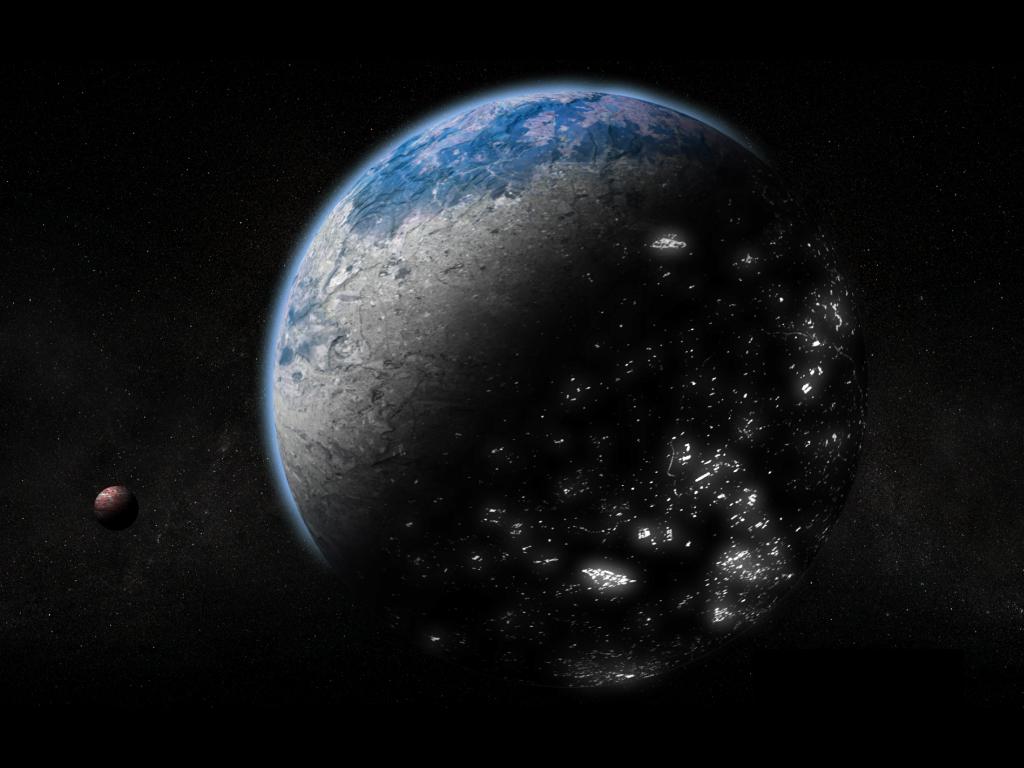Sarah T. Roberts and Mél Hogan
This essay has been peer-reviewed by “The New Extremism” special issue editors (Adrienne Massanari and David Golumbia), and the b2o: An Online Journal editorial board.
“You know, I hear all these rich guys, for some reason they love space. So they’re rich. I said, ‘let them send the rockets up. What the hell do we have to do it, right?’”
— US President Donald Trump, Aug 15 2019 campaign rally,
Manchester NH (quoted in FOXBusiness 2019)
1. Preppers, the Rapture and on Being “Left Behind”
At the turn of the millennium, an unexpected success took the mainstream publishing industry completely off-guard. A series of science fiction novels published by a tiny Christian press and depicting the end of the world from a distinctly Christian fundamentalist perspective became a massive, best-selling hit (McAlister 2003). Its themes of survival following a catastrophic global event were not foreign to the universe of science fiction literature; doomsday scenarios resulting in flight from one’s home planet to a celestial otherworld via space travel have served as plot devices in countless books, films and video games. Yet something about the Left Behind series (LaHaye and Jenkins 1995) was distinct.
That novelty in this case hinged upon the fact that the dystopian doomsday scenario in question was taken directly from an evangelical Christian Biblical interpretation of the Rapture, the New Testament prophecy that says that believers of Christ would be delivered en masse to Heaven while non-believers would be left to fend for themselves in a ravaged, evil-infected world. Despite, or perhaps because of, its overt Christian Evangelical bent, the series was both a massive commercial success and a cultural phenomenon. Drawing on its Evangelical underpinnings, the series located evil at a point of origin true to its theology and politics: as reported by SF Gate at the height of the its popularity, in 2006, “in [the Left Behind series], set in perfectly apocalyptic New York City, the Antichrist is personified by fictional Romanian Nicolae Carpathia, secretary-general of the United Nations and a People magazine ‘Sexiest Man Alive’” (Lelchuk and Writer 2006).
The series went on to spawn a popular, albeit technically flawed, video game (and sequels), in which the conceit is to convert as many non-believers as possible and save them from post-Armageddon eternal terrestrial doom. It also led to the production of several films, the first batch starring former sitcom actor and Evangelical Christian Kirk Cameron, followed by an attempted 2014 reboot featuring Nicolas Cage. Whatever the medium, the heroes of the franchise were no Luddites; indeed, as American Studies scholar Melani McAlister remarked in her expansive essay on the cultural meaning of Left Behind:
LaHaye and Jenkins establish their characters as more modern than modern. Making the most of the fact that the events they describe must necessarily be the future (though a rather near-term future, in their view), the novels present a world in which our Tribulation Force members are unfailingly knowledgeable about, and outfitted with, an impressive array of the best possible equipment, from guns to high-end SUVs, from Gulfstream jets to the ‘computer without limitations’ ordered by the Tribulation Force from an underground dealer. (McAlister 2003, 783)
The Rapture is a religious event, key to understanding Evangelical Christian theology and practice. But in the Left Behind series, it is also a secular global disaster, which requires skill, determination, tech and ideological dedication to survive. Those who remain on Earth wait for their own opportunity to be spirited away, newly transformed into fully committed believers, to a Christian heaven.

While the Left Behind franchise reflects a profoundly sectarian Evangelical Christian eschatology, preoccupation with the coming of end times, whether Christian or secular versions, has become more commonplace and concomitantly more socially acceptable in 21st century American culture—on the rise, however, since the mid-20th century’s preoccupation with escape from nuclear annihilation by a paradoxical technological arms race. This new social acceptability has been enhanced by worsening economic, environmental and social conditions, and bolstered by technological developments designed to accommodate a dystopian, resource-poor future marked by global war, environmental chaos, famine, and/or the end of sustainable human life.
What Left Behind did to prepare the Evangelical American psyche for coming horror has been replicated in material form: to prepare for a variety of nightmarish end-times eventualities, people have built bunkers, stockpiled food, hoarded weapons and created structures (many in the form below-ground bunkers, but also silos, geodesic domes and other improbable architectural masterworks) intended to offer the latest technological innovations that can support inhabitants in a variety of post-apocalyptic scenarios.[1] Many are elaborate and spare no innovation or expense to provide for the inhabitants’ creature comforts and well-being as the world above disintegrates into chaos and ruin.
There is historical precedence for this new end-of-days prepping, grounded in the mid-20th century Cold War nuclear fallout shelters. A recent article in The Atlantic on the new luxury prepping phenomenon begins with this historical observation: “On July 25, 1961, President John F. Kennedy spoke to the American people of a need ‘new to our shores’ for emergency preparedness, including fallout shelters. The bunkers of that era—Brutalist, cement, with foldout beds and stockpiled food—were designed to protect families in the event that the Cold War turned hot” (Rowen 2017). Decades on, these early escape rooms, and the anxieties that had provoked them, had largely melted away, their remnants anachronistic oddities of another time.
One of this article’s authors recalls childhood afternoons in the 1980s playing in a bomb shelter built off a friend’s basement, which had fallen into disuse, never having been deployed in the context of the man-made disaster scenario of post-nuclear holocaust survival. It was a physically and emotionally uncomfortable reminder from another era, lined in cold concrete cinder blocks and plywood bunks. Nonetheless, its builders had gone to pains to decorate and had painted on the cement walls, cheerily but ominously, a wooded nature landscape scene that, aboveground, would have been all but assuredly vaporized, were its builders actually ensconced inside it for the long haul and using it for its intended purpose.

In the post-9/11, economically depressed and socially divided America, disaster preparedness has been experiencing a comeback. A new prepper phenomenon has even become the fodder of media empires: Doomsday Preppers, a reality program, airing on cable’s National Geographic Channel from 2011 through 2014, was a ratings hit (National Geographic Channel 2014), which subsequently spawned a number of lookalikes on other networks (Genzlinger 2012). As depicted on these programs, the preppers of the paranoid post-millennium come in all orientations and political persuasions, but lean toward the right of the political spectrum, with strains of individualism and lack of faith in government the predominating common threads among them. A fondness for weaponry of all kinds—but particularly for guns— and means of self-defense are often at the center of the preparations and infrastructure, so that the prepared may defend themselves not only against an enemy, but also against those who were not so well prepared for calamity and unwisely attempt to seek material support or other assistance from their neighbors.
Indeed, it is the very preparation involving the arming of one’s self and family in the face of impending disaster that serves as a culture of its own; the gun culture prevalent in the United States is frequently overlaid with prepper culture and, itself, serves as a focal point of strong community formations. The group known as “America’s Largest Right-Wing Militia,” the Georgia III% Security Force, is depicted intimately in VICE’s “Guns in America” series (III% Security Force nd). As explained by VICE, this group “is inspired by the unfounded claim that only three percent of colonists fought against the British in the American Revolution” (VICE 2017). The Georgia Three Percenters fight against what they perceive as attacks on the Second Amendment to the United States Constitution, protecting the people’s right to bear arms. To prepare for what they believe is an imminent war, they gather monthly to train and discuss strategies. This group, led by White, rural working-class people, was especially active in the months leading up to the 2016 US elections, convinced that Hillary Clinton was “plotting to take them [their guns] away” (Zucchino 2016), a likelihood that had no basis in demonstrable fact.
Despite its overwhelming association with White culture and people, the group has complicated racial politics, as often eluded to by the militia’s leader Chris Hill in the VICE profile. On camera, Hill explains: “we’re not racist, we’re against racism… we’re against supremacy of all kind—fuck it all—we’re all created equal, but until people can get that fucking message we must be prepared to defend ourselves and each other” (VICE 2017). Who the enemy is remains forever ideological, conceptual, and a perfect opportunity to play with guns to protect a future imaginary of their own making.
The hoarding of guns and a lust to use them are the organizing principles of Mel Bernstein’s life; he is described in numerous media accounts (and also self-styled) as the “most armed man in America” (Koenigs 2017). Bernstein collects, rents and sells military-style vehicles and weapons from his 260-acre compound (called “Dragonland”) in Colorado Springs. He also runs a paintball park, motocross park, military museum, gun shop and shooting ranges.
One of the 3 percent of Americans who own half the country’s guns (Ingraham 2016). ABC News recently aired a short profile on Bernstein (Koenigs 2017), focusing on his extreme nostalgia and sense of loneliness: five years ago, his wife was killed by a smoke bomb on their property during the filming of reality-TV pilot for the Discovery Channel. He now lives with four human-sized dolls, all of which he has named (Jennifer, Betty, Jill, and one unnamed in the clip), dressed in feminine attire, and posed in the nostalgic 1950s-style diner that is his kitchen. Bernstein legally owns more than 4000 weapons; his bedroom is lined with M16s and assault rifles, sawed-off shotguns, and handguns—but it is the mannequins that push people to question his sanity.

The appeal of groups and individuals like the III% militia, Bernstein, and reality TV preppers as the subjects of programs—and their shared overlapping interest in and certainty of near-future impending global calamity—is due in part to the ingenuity with which they conceive and execute their survival goals. Enjoyment, however, often comes with that dose of schadenfreude or superiority endemic to reality TV, undergirded by a tacit mocking of its subjects at all times (Papacharissi & Mendelson 2007; Reiss & Wiltz 2004). In aggregate, a great deal of the appeal lies in looking in on crazy zealots, ridiculous obsessives, and eccentrics who spend their families’ life savings and all of their time burrowing in their backyards or hoarding non-perishables. The unresolved issue at the root of the entire enterprise, as the New York Times preppers TV article points out, is the question of who would even want to survive the disasters for which the preppers are prepping (Genzlinger 2012). For many of the preppers, it is the singular focus on prepping itself from which they derive the satisfaction that blurs so easily into religious fervor. The TV preppers’ solutions to anxieties for the future must always be counterbalanced for viewers by a sense of ridicule and unease provoked by the necessary obsessiveness it takes to plan for disasters that may never come—a global electromagnetic pulse, alien invasion, total environmental collapse, or the need to survive until the rapturous wave arrives to call them to the next stage of existence.
While these eccentric, yet mostly unheralded (prior to their profiles on TV) people are easily made the object of humor or scorn through programs like Ultimate Preppers or ABC’s feature on Bernstein, stories about social and financial elites’ machinations in these directions are offered up without the same sort of skepticism. From Steve Bannon to Elon Musk, or from Biosphere 2 to SpaceX, the elite can afford passion projects of immense scale unavailable to even the most ingenious TV prepper. Rather than resolve issues on earth, they look to the stars and into our cells. Perhaps they know something others do not. Feminist philosopher Rosi Braidotti offers a diagnosis:
The new necro-technologies operate in a social climate dominated by a political economy of nostalgia and paranoia on the one hand, and euphoria or exaltation on the other. This manic-depressive condition enacts a number of variations: from the fear of the imminent disaster, the catastrophe just waiting to happen, to hurricane Katrina or the next environmental accident. (Braidotti 2012, 9-10)
Braidotti draws our attention to the contexts of disaster and how they shape lived experiences in imagined geographies and temporalities—tangible, but made-up; real, but fabricated. For Braidotti, and for philosopher of science Isabelle Stengers, ecological crises induce a cold panic that can be harnessed by technologically and economically élite “Guardians” (Stengers 2015, 27) to offer up a series of seemingly viable non-choices as choices and non-solutions as solutions. Technocratic problem-solving continues to adhere foremost to free-market ideology, which endeavors to maintain or deepen status quo power dynamics, unequal global economies, and to allow for social collapse, all due to a pathological resistance to state- or community-imposed regulation and limits. Because American culture equates money and power with morality and leadership, Stengers suggests that the outcome is a no-choice choice ultimately “between barbarism and barbarism” (Wark 2015), with people and planet held hostage to corporations and those who benefit from them.
Whether Earth’s collapse will come due resource extraction, environmental destruction, or war (or a combination thereof), the technocratic élite are not only both predisposed and poised to start anew somehow and somewhere else well beyond the backyard bunker but may even welcome or initiate it by way of inaction in the face of destruction on Earth. The outcome of any such cataclysmic, Earth-destroying catastrophes would yield a Rapture of its own, with the secular believers delivered to a futuristic beyond, and the rest who did not believe, or could not afford to, left behind.
2. The Worse the Better: Accelerationism and Nihilism
Accelerationism (from the right) is a theoretical counter-proposal to resistance (from the left); a destabilizing force for fighting the ills of capitalism. As Benjamin Noys summarizes it in his Malign Velocities (2014):
Instead of rejecting the increasing tempo of capitalist production [proponents] argue that we should embrace and accelerate it. We haven’t seen anything yet as regards what speed can do. Such a counsel seems to be one of cynicism, suggesting we come to terms with capitalism as a dynamic of increasing value by actively becoming hyper-capitalist subjects. What interests me is a further turn of the screw of this narrative: the only way out of capitalism is to take it further, to follow its lines of flight or deterritorialization to the absolute end, to speed-up beyond the limits of production and so to rupture the limit of capital itself. (Noys 2014, i)
Accelerationism proposes that we collectively let things unravel to their full extent – socially, politically, economically, environmentally–by stoking, rather than seeking to mitigate–the forces that drive us toward devastation. In the accelerationist imaginary, the future is not about harm reduction, limits or restoration; rather it is a politics driving toward an endgame of the totalizing undoing of capitalism by capitalism.
Accelerationism locates resistance to capitalism as a byproduct of capitalism itself that by its nature reproduces it, and that such resistance can never fully stand outside of it to fight it, or really even be complete. It also suggests a foregone and nihilist conclusion to the contemporary status of global humanity, which, it asserts, was completely and inextricably captured within the capitalist orbit. It is thus an ideology offering no new ideas or no possibility for meaningful change beyond the total, inevitable collapse of the global system. In its early instantiations, accelerationism was a declaration about capitalism as a kind of alien invader from the future (Mackay 2012). It sees the outcome of late-stage capitalism as pushed by growth and profit to the point of spectacular self-destruction, an outcome that it welcomes.
Accelerationism as a political philosophy, with its goal of bringing about the end of the status quo (capitalism) by accelerating the world into full-blown crisis, has adherents on the left. Some leftists identify with the anti-capitalist endgame and see accelerationism as a means to implement a radical call for anti-work, full automation, and so on (Terranova 2014).[2] Yet, more significantly, it seems to have been taken up by the right, the outcome of a certain nihilism rooted in a sense of inevitability about the end of the world as we know it—due to environmental failures, natural (man-made) disasters and global warming, and so on—and a science fiction-influenced, technologically-driven fascination with concepts of spaceward expansionism, extraction and conquest. This right-wing strain is most commonly identified with Nick Land, once of the Cybernetic Culture Research Unit, or Ccru, at the University of Warwick (UK).
As his editor and onetime student Robin Mackay explains in the introduction to a collection of Land’s writings, “Marxists in particular were outraged by Land’s aggressive championing of the sociopathic heresy urging the ‘ever more uninhibited marketization of the processes that are tearing down the social field’—[hence] the acceleration, rather than the critique, of Capitalism’s disintegration of society” (Land 2017, 3).
Capitalism demands competition, which, in turn, relies on technological deployments, which, in turn, rely on the exploitation of cheap nature and labor, and reliable but unequal global flows (Moore 2014). Humans are not at the center, they merely serve toward the rendering of a technofuture, and then become superfluous. According to Alex Williams, in Nick Land’s envisioning of a post-capitalist future, “the human can eventually be discarded as mere drag to an abstract planetary intelligence rapidly constructing itself from the bricolaged fragments of former civilisations” (Williams 2013, 2). As for Land, he left his university post and has retreated to Shanghai to ruminate and produce paranoid speculative fiction with an accelerationist bent, his erstwhile right-curious politics having fully morphed into open and unabashed fascism.
In sum, what accelerationism as a political philosophy offers its adherents is a profoundly nihilistic view that suspends any hope in the ability of humans to intercede meaningfully in the world as it is. Instead, it hangs its hopes on an End Times of its own, awaiting a sort of secular Rapture that compels acolytes to not only await, but celebrate, the inevitable unravelling of the social order and collapse of the world as we know it For many, its proponents would claim, the worse things get, the better. Sound familiar?
When viewed through the dual lens of prepperdom and nihilistic accelerationism—both of which hold out for global disaster with a certain amount of titillation and glee—the large-scale projects for which techno-élites like Musk have become famous can be seen in another light entirely: as dismal, fatalistic projects that have given up any faith (pun intended) in the ability to resolve the human condition or life on Earth, in general, or perhaps, even more specifically, that there would be inherent value in such an effort at all. Indeed, the projects promoted by this technocratic élite do not scope into something favorable for a majority of the world’s inhabitants or life as we now know it; instead, they are so narrowly aimed as to solve very little about the ruinous conditions for vast swaths of the world’s population and, in many cases, quite literally seek to abandon Earth entirely.
Examples such Musk’s investments in SpaceX, his ruminations that we are all likely living in a computer simulation, or the desire to colonize Mars, all point toward his belief that life on Earth is largely unsalvageable; his billions of dollars of wealth and his unfettered access to resources therefore follow suit. In this regard, a recent musing from him on Twitter takes on an ominous undertone; his idle, passive musing about migrant children placed in cages in detention centers by the Trump Administration proposes no solution, no alternative, no call to act. Perhaps, in accordance with his world view, he sees no reason to. The game has already been lost and those in the know have moved on.

3. Dreaming of Post-Earth
In the billionaire kingmaker class, Musk is not alone in his post-Earth predilection. Indeed, he is one of several of his echelon looking cynically to science fiction and the après-apocalypse, fantasizing about outlandish ways to spend–and make–profits via projects that deepen long-standing commitments to Western supremacy and colonization, albeit with a futuristic bent. At the 2016 Republican National Convention that heralded the political ascendency of Donald Trump, PayPal billionaire and Gawker/journalism foe Peter Thiel (Thompson 2018) hailed the conquest of Mars as a worthier endeavor than wars in the Middle East. In doing so, Thiel inadvertently showed his ideological hand by invoking both as equivalent games of conquest (Daily Beast 2016). Other projects in this vein include Biosphere 2 (once the province of former Trump advisor and professional propagandist Steve Bannon), HI-SEAS, Apple’s new “Spaceship” headquarters, and the NSA’s Star Trek-inspired control room, all of which posit various offworld-oriented technological solutions to a dying future. It is a future in which capitalism has already played out the dissolution of democracy and social equalities, favoring a libertarian fend-for-yourself approach for those who remain– and those who remain, according to these projects, are overwhelmingly White, wealthy able-bodied people of the Global North.

Biosphere 2 was an architectural and ecology project launched in the early 1990s, privately funded by the Texas oil billionaire “ecopreneur” Edward Bass, who, given his industry, likely had certain expertise and foresight related to impending ecological collapse (Atlas Obscura 2013; “Biosphere 2” 2003). Based on science-fiction and architectural futurist concepts of fully-enclosed and self-sufficient human habitation environments known as “arcologies” (Plunkett 2011), Biosphere 2 was an attempt to create Earth-like living conditions within a container–what some early media reports described as “life in a bottle” (Turner 2011). The underlying conceit was that such living habitats would become necessary on Earth or on other planets, after life on this one could no longer be sustained.

The project quickly failed on many fronts, at which point future Breitbart News Editor-in-Chief Steven Bannon, at the time a former Goldman Sachs investment banker specializing in media and entertainment investments, was asked to come in to financially salvage the project (Jardin 2016). During this period, Biosphere 2 spiraled down from a quasi-legitimate scientific endeavor into a tourist spectacle, sharing more in common with Xanadu Computerized Houses of the Future (Dells Travel 2014) than legitimate empirical scientific research; lawsuits ensued in short order (Murphy 2016).
While Bannon claimed publicly that the Biosphere 2 experiment had been to study the effects of CO2 emissions and climate change in real-time, rather than merely through computer simulation, the entire project became one of fake science, with its focus repeatedly shifting to any story of innovation that could be packaged for the media.

In a similar case of earthbound arcologies meant to imagine a future framed by offworld life, the volunteer crew of the latest NASA Hawai’i Space Exploration Analog and Simulation (HI-SEAS) mission remained cloistered for eight months as part of a study to learn how astronauts might interact and problem-solve during long deployments. In HI-SEAS, six volunteers inhabited a fake Mars colony, playing the part of astronauts. Project chronicler Lynn Levy described the project as planning “for the day when the dress rehearsals are over, and we blast off for real” (Gimlet Media, 2018). Here too, however, participants were kept busy with scientific homework: “The HI-SEAS site has Mars-like geology which allows crews to perform high-fidelity geological field work and add to the realism of the mission simulation” (HI-SEAS, n.d.).
It is worthy of note that the HI-SEAS site was chosen for its environmental similarities to Mars, but seemingly without any acknowledgment of the irony that the make-believe colony is located on the very much contested and already colonized island of Hawai’i, where active protests are now underway to impede the placement of further telescopic equipment used for astronomical observation atop sacred mountains.

A nod to offworld architecture and otherworldly craft was resonant too, in the design of both Apple’s new “Spaceship” headquarters and the NSA’s control room. Both structures were characterized by design demonstrating the desire to have not only control over but also a front row seat to the apocalypse . The new Apple campus, shaped like a flying saucer (or perhaps the ouroboros-like literal form of its longtime “infinite loop” street address) has all the amenities of a city, becoming, much like Star Trek’s Starship Enterprise or a fully-enclosed archology, its own world-within-a-vessel. It operates like a spaceship that has landed on earth rather than one about to take off, and by design uses its surroundings to anchor itself for future generations. The spaceship is surrounded by a thick layer of trees, mostly apricot, maintains a thousand bikes on the site for workers to get around, and has its own energy center that runs mostly off-grid. The spaceship aesthetic and panoptic/open floor work spaces reinstate order and hierarchy through structural and embedded surveillance while suggesting freedom of movement and action. Ample amenities are designed to keep workers on-site and productive, ideally for longer than an eight-hour workday, recalling the company towns of the 18th, 19th and 20th centuries. Not to be outdone, both Google and Facebook have announced employee housing near their expansive campuses (Stangel 2017), in partial response to extraordinary housing costs in Silicon Valley (created by the demand from their own workers).

The unbroken circle design of the building creates an inside vs. outside protected space for Apple employees in much the same way that projects from 1950s fallout shelters to Biosphere 2 have sought to seal off a group of the chosen from the others who must remain outside the walls. Indeed, just as the skies part to allow ascendency to Heaven of God’s anointed on the cover of the Left Behind video game (as seen in figure 1), the artistic rendering of the Apple Spaceship shows a similar break in the clouds and sunlight beaming down on its infinite loop.
The appeal of science fiction fantasy has been taken up by government agencies, too. In contrast to the Chilean “Synco” or “Project Cybersyn” of the 1970s, which used cybernetic aesthetics to create a work room to respond to economic crises in real time (Medina 2011), the former National Security Agency (NSA) Chief Keith Alexander’s had constructed an “Information Dominance Center” war room (Greenwald 2013). For Chile’s socialist President, Salvador Allende, ‘revolutionary computing’ meant putting workers in control of decisions (Medina 2006, 574–575). This socialist project stands in contrast to the “Information Dominance Center” designed to allow the USA’s NSA virtually one-man control over an increasingly vast network of surreptitious surveillance and data gathering.
In the case of both Big Tech and governmental surveillance agencies, undergirding a commitment to the inevitable and imminent time after Earth is the appeal of science fiction aesthetics, concepts and projects, all aimed toward the new goal of having new places and opportunities to conquer, colonize and dominate post-Earth. SpaceX’s goal is to land a person on Mars; closer to home are other instantiations of futuristic fantasy, from the NSA’s Star Trek-inspired control room to Apple’s Spaceship. Hermetically-sealed scientists and volunteers roleplay in extreme environments to ready themselves for off-world living. In all of these examples, the playing out of “accelerationism” is both a chronological and technological acceleration, as well as the strategic buying and use of remaining time–to hide, prepare and come up with exit strategies.
What makes these cases so compelling is that they often inadvertently show the élites’ cynical, hubristic and pessimistic hand, a tell that gives away the fact that their technological propositions cannot salvage life on Earth for the masses, and, even worse, that they are no longer interested in trying. These projects all cater to the right’s accelerationist rationale that it is too late to act, too late to come together for collective decision-making, and too late to care, all while disavowing the powerful agency that has gone into making those beliefs into fact (such as in the case of the fossil fuel magnate who bankrolled Biosphere2). The investment is therefore into a future for the prepared and worthy few, and damnation for the rest.
Conclusion: Prepping for Pleasure and for Profit
For this special issue of b2o, we have explored Musk’s SpaceX, the NSA’s control room, Biosphere 2, HI-SEAS, and Apple’s new “Spaceship” headquarters. In them, we find deep political, ideological and even theological deployments of technology concerned with escape from planet Earth. These projects and structures necessarily downplay and deny their impetus: the deleterious, long-term effects of human-induced, industrial-scale problems such as resource extraction, environmental destruction, and war. The common throughline to these projects is the often unarticulated and disturbing conceit that the viability of Earth to sustain a high quality of life for élites, and, by extension, for the vast majority of the population is no longer assured. In such a scenario, escape to the stars, as best imagined in Cold War-era pulp science fiction, should not only be welcomed but perhaps hastened; a secular Rapture or “Left Behind” for Dawkins-esque technofetishists who pray at the altar of “disruption” and “innovation.”
Linked theoretically, conceptually, and politically, both to each other and to their unacknowledged or obfuscated ideological origins in accelerationism and nihilism, these endeavors, and their proponents in government and technology sectors, represent the ultimate preppers, ready to start anew somehow and somewhere else: in a self-contained unit like Biosphere 2 or HI-SEAS, on the newly discovered “habitable” planets, or on Mars.
Nick Land’s accelerationist vision of society is one already lost to any means of human intervention ; as such, we should let the process unfold as society proceeds toward inevitable collapse, in order to start anew. It is a grim End Times vision of Biblical proportions; what it lacks in evangelical Christianity it makes up for in a totalizing world view demanding adherence rising to zealotry.
For those who are not solely hypercapitalist zealot-purists of a Landian variety and yet are attracted to futurist projects (but a few of which we have catalogued here), acceleration towards cataclysm, as articulated through large-scale prepper projects for an off-World future, has its own draw and proposes its own alluring rewards: the economic incentives of colonization, resource control and a rush to develop, own and extract post-Earth is expected to pay off, financially and figuratively. Woe be unto the rest of us who do not heed the signs and find ourselves left behind.
_____
Sarah T. Roberts is assistant professor in the department of information studies at UCLA. Her book, Behind the Screen: Content Moderation in the Shadows of Social Media, is out now from Yale University Press.
Mél Hogan is assistant professor of Environmental Media at the University of Calgary. She is writing a book about genomic media and DNA data storage in the cloud.
_____
Notes
[1] It is worth noting that geodesic domes were the province and product of Buckminster Fuller, whom Stewart Brand, early Silicon Valley champion and counterculture hero, credited as the inspiration behind his Whole Earth Catalog. Fred Turner, in his chronicle of this period and culture, writes “in retrospect, it is easy to understand Fuller’s appeal to cold war American youth…he simultaneously embraced the pleasures and power associated with the products of technocracy and offered his audiences a way to avoid becoming technocratic drones. Moreover, according to Fuller, the proper deployment of information and technology could literally save the human species from annihilation” (Turner 2010, 57)
[2] See also Shukaitis (2009): “one could argue that through much of leftist politics runs the notion of an apocalyptic moment, of some magical event (usually revolution), followed by the creation of a new and better world” (97).
_____
Works Cited
- Atlas Obscura. 2013. “Biosphere 2: A Glass-Encased Artificial Earth in the Arizona Desert.” Slate (Sep 5).
- Archer Productions. 1951. “Duck and Cover.”
- “Biosphere 2.” 2003. Dictionary of American History. Farmington Hills, MI: The Gale Group.
- Braidotti, Rosi. 2012. The Posthuman. Oxford: Polity Press.
- The Daily Beast. 2016. “RNC Speaker Peter Thiel: Let’s Go to Mars.” The Daily Beast Cheat Sheet (Jul 22).
- Dells Travel. 2014. “Retro Attractions: Xanadu—Foam House of Tomorrow.” 2014. Dells.com (Sep 4).
- FOXBusiness. 2019. “President Trump Says these ‘Rich Guys’ Are ‘Paying a Lot of Rent’ to Launch Rockets.” FOXBusiness (Aug 15).
- Genzlinger, Neil. 2012. “Doomsday Has Its Day in the Sun.” The New York Times (Mar 11).
- Gimlet Media. 2018. The Habitat: Life on Mars. Sort Of. Podcast series.
- Greenwald, Glenn. 2013. “Inside the Mind of NSA Chief Gen Keith Alexander.” The Guardian (Sep 15).
- Hersher, Rebecca. 2016. “‘Mars Mission’ Crew Emerges From Yearlong Simulation in Hawai’i.” The Two-Way (Aug 29).
- HI-SEAS. nd. “Hawaii Space Exploration Analog and Simulation.”
- III% Security Force. nd. “III% Security Force Intel.”
- Ingraham, Christopher. 2016. “Just Three Percent of Adults Own Half of America’s Guns.” Washington Post (Sep 19).
- Jardin, Xeni. 2016. “Before Breitbart, Before Trump, Bannon Bullied People in Biosphere 2.” Boing Boing (Aug 26).
- Koenigs, Michael. 2017. “What the ‘Most Armed Man in America’ Has to Say about Mass Shootings.” ABC News (Nov 9).
- LaHaye, Tim, and Jerry B. Jenkins. 1995. Left Behind: A Novel of the Earth’s Last Days. Carol Stream, IL: Tyndale House Publishers.
- Land, Nick. 2017. Fanged Noumena: Collected Writings 1987-2007. Fourth edition. Falmouth and New York, NY: Urbanomic/Sequence Press.
- Lelchuk, Ilene. 2006. “‘Convert or Die’ Game Divides Christians / Some Ask Wal-Mart to Drop Left Behind.” SFGate (Dec 12).
- Mackay, Robin. 2012. “Nick Land—An Experiment in Inhumanism.” Umělec Magazine 1.
- McAlister, Melani. 2003. “Prophecy, Politics, and the Popular: The Left Behind Series and Christian Fundamentalism’s New World Order.” The South Atlantic Quarterly 102:4 (Fall). 773–798.
- Medina, Eden. 2006. “Designing Freedom, Regulating a Nation: Socialist Cybernetics in Allende’s Chile.” Journal of Latin American Studies 38:3. 571–606.
- Medina, Eden. 2011. Cybernetic Revolutionaries: Technology and Politics in Allende’s Chile. Cambridge, MA: The MIT Press.
- Moore, Jason W. 2014. “The Origins of Cheap Nature: From Use-Value to Abstract Social Nature.” Author’s blog (Apr 7).
- Murphy, Tim. 2016. “Trump’s Campaign CEO Ran a Secretive Sci-Fi Project in the Arizona Desert.” Mother Jones (Aug 26).
- Musk, Elon. 2018. “I hope the kids are ok.” Twitter (Jun 19).
- National Geographic Channel. 2014. “Doomsday Preppers Season Four to Premiere Thursday, July 24 on National Geographic Channel.” Press release via TV By the Numbers (Jun 26).
- Noys, Benjamin. 2014. Malign Velocities: Accelerationism and Capitalism. Alresford, Hants, England: Zero Books.
- Papacharissi, Zizi and Andrew L. Mendelson. 2007. “An Exploratory Study of Reality Appeal: Uses and Gratifications of Reality TV Shows.” Journal of Broadcasting & Electronic Media 51:2. 355–370.
- Plunkett, Luke. 2011. “The Real Story Behind Sim City’s Arcologies.” Kotaku (Jul 12).
- Reiss, Steven and James Wiltz. 2004. “Why People Watch Reality TV.” Media Psychology 6:4. 363–378.
- Rowen, Ben. 2017. “A Resort for the Apocalypse.” The Atlantic (Mar).
- Shukaitis, Stevphen. 2009. “Space Is the (Non)Place: Martians, Marxists, and the Outer Space of the Radical Imagination.” The Sociological Review 57:1 (May). 98–113.
- Stangel, Luke. 2017. “Google and Facebook Are Building the Ultimate Perk: Housing.” CXO Magazine (Nov 14).
- Stengers, Isabelle. 2015. In Catastrophic Times: Resisting the Coming Barbarism. London: Open Humanities Press.
- Thompson, Derek. 2018. “The Most Expensive Comment in Internet History?” The Atlantic (Feb 23).
- Turner, Christopher. 2011. “Ingestion: Planet in a Bottle.” Cabinet 41 (Spring).
- Turner, Fred. 2010. From Counterculture to Cyberculture: Stewart Brand, the Whole Earth Network, and the Rise of Digital Utopianism. Chicago: University of Chicago Press.
- VICE. 2017. “Inside America’s Largest Right Wing Militia.” Hysteria (Oct 18).
- Wark, McKenzie. 2015. “Barbarism or Barbarism?” Public Seminar (Dec 28).
- Williams, Alex. 2013. “Escape Velocities.” e-flux 46 (Jun).
- Zucchino, David. 2016. “A Militia Gets Battle Ready for a ‘Gun-Grabbing’ Clinton Presidency.” The New York Times (Nov 4).



 a review of Jussi Parikka, A Geology of Media (University of Minnesota Press, 2015) and The Anthrobscene (University of Minnesota Press, 2015)
a review of Jussi Parikka, A Geology of Media (University of Minnesota Press, 2015) and The Anthrobscene (University of Minnesota Press, 2015)

